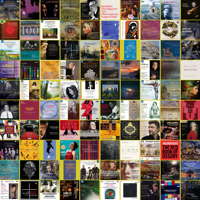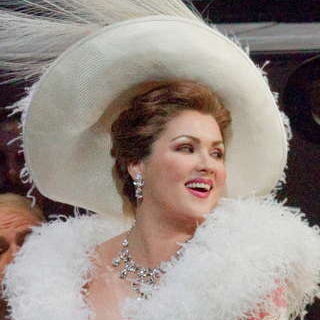- James Conway
- Andrejs Osokins
- Jirí Belohlávek
- George William Henry Faulkes
- Gounod
- Enesco
- Samuel Sebastian Wesley
- Riccardo Chailly
Elegant and Innovative
GIUSEPPE PENNISI experiences Teatro dell'Opera di Roma's Homage to Stravinsky
Igor Stravinsky, born in Lomosov (Russia) in 1882, died in New York on 6 April 1971, after a long productive life through the musical scene of the twentieth century. For his own desire, he is buried in Italy, namely in Venice.
As a homage for the fiftieth anniversary of his death, the Rome Teatro dell'Opera was preparing a new production of A Rake's Progress, an opera that had its debut at the Teatro La Fenice in Venice in 1951. However, the pandemic prevented staging it. Therefore, an elegant and innovative program was set: a concert of a few 'easy pieces' for small orchestra to be held not in the Teatro dell'Opera but in one of the halls of the recently built Museum for the Twentieth First Century. This is a modern and contemporary art museum located very closely to the Parco della Musica (Music Park) where there are three auditoria and a small theatre.
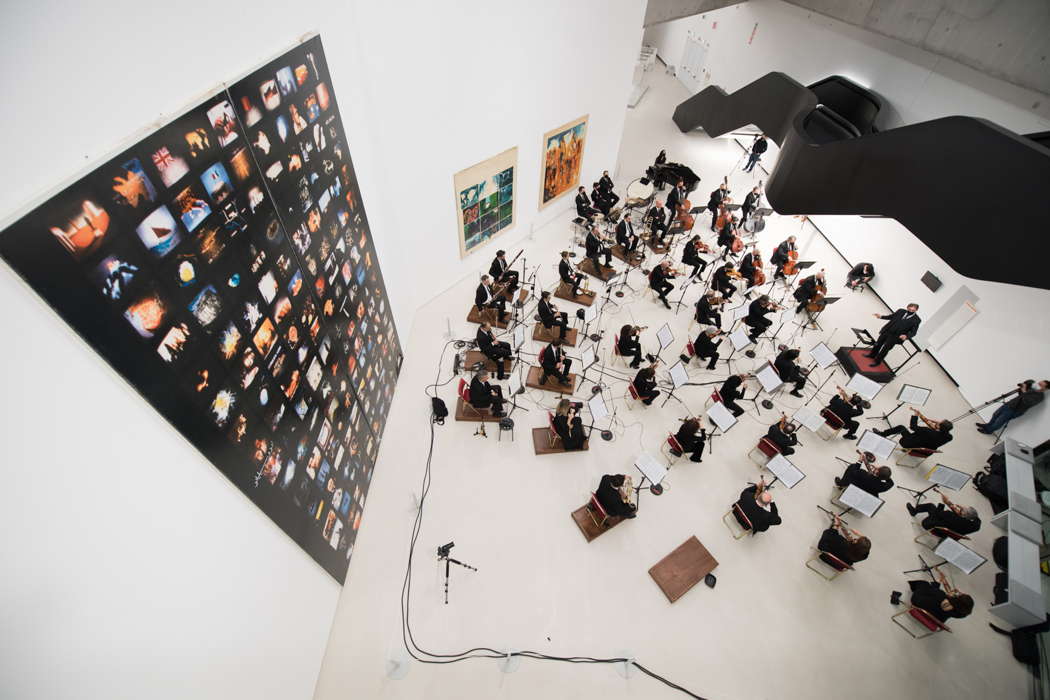
Opera di Roma's Homage to Stravinsky concert. Photo © 2021 Fabrizio Sansoni
The photos show that the location could not be better because the orchestra, conducted by Daniele Gatti, played in a surrounding of contemporary and modern paintings. This was a perfect fit to Stravinsky's short compositions chosen for the concert. I saw and listened to it on 22 March 2021 via Teatro dell'Opera TV, where it is available at no charge for a few weeks.
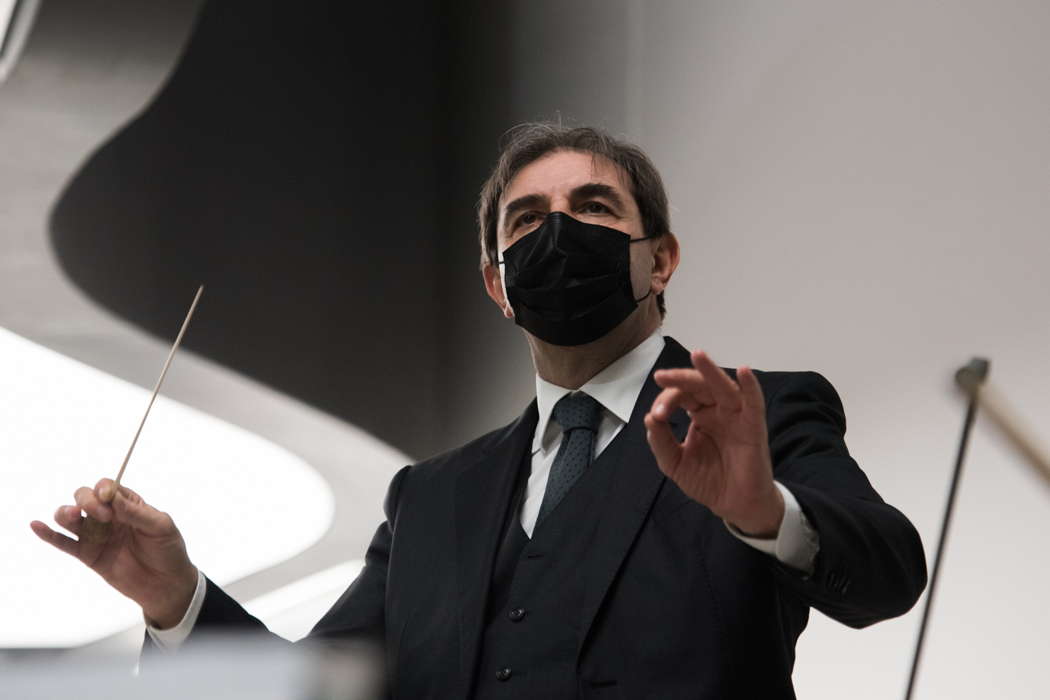
Daniele Gatti conducting at Opera di Roma's Homage to Stravinsky concert. Photo © 2021 Fabrizio Sansoni
The compositions are: a) the concerto in E flat named Dumbarton Oaks (1937-38) ; b) the Dances Concertantes (1944) and c) the two suites for small orchestra (1921-1925). In short, a good sample of Stravinsky's orchestral work in the first half of the twentieth century.
A few words on the compositions. The concerto in E-flat, inscribed Dumbarton Oaks, is a chamber concerto named after the Dumbarton Oaks estate of Robert Woods Bliss and Mildred Barnes Bliss in the Georgetown area of Washington, DC. The couple commissioned it for their thirtieth wedding anniversary. Composed in Stravinsky's neoclassical period, the piece is one of Stravinsky's two chamber concertos - the other being the Concerto in D, for strings, of 1946 - and is scored for a chamber orchestra of flute, B flat clarinet, bassoon, two horns, three violins, three violas, two cellos, and two double basses. The three movements, Tempo giusto, Allegretto and Con moto, performed without a break, total roughly twelve minutes.
The concerto was inspired by Bach's set of Brandenburg Concertos, and was the last work Stravinsky completed in Europe, started in spring 1937 at the Château de Montoux, near Geneva, and finished in Paris in 1938. There was a private premiere in the music room at Dumbarton Oaks and a public premiere took place in Paris. The full-score manuscript, formerly owned by Mr and Mrs Robert Woods Bliss, is in the Harvard University Rare Book Collection of the Dumbarton Oaks Research Library, Washington, DC. It became generally well-known when, in 1972, a ballet, choreographed by Jerome Robbins, was premiered by New York City Ballet, calling for one principal and six corps dancers. In the 22 March concert, the small ensemble helped me to make a discovery: the Teatro dell'Opera di Roma orchestra is a group of soloists, where each member can stand alone a for full concert. The flute and the clarinet were marvellous.
The Danses concertantes were masterminded for Stravinsky's friend and colleague George Balanchine, who created two versions of a ballet set to his music: one for the Ballet Russe de Monte-Carlo in 1944 and one for the New York City Ballet in 1972. In both instances, it was a very successful ballet. In a concert, the score is both charming and engrossing.
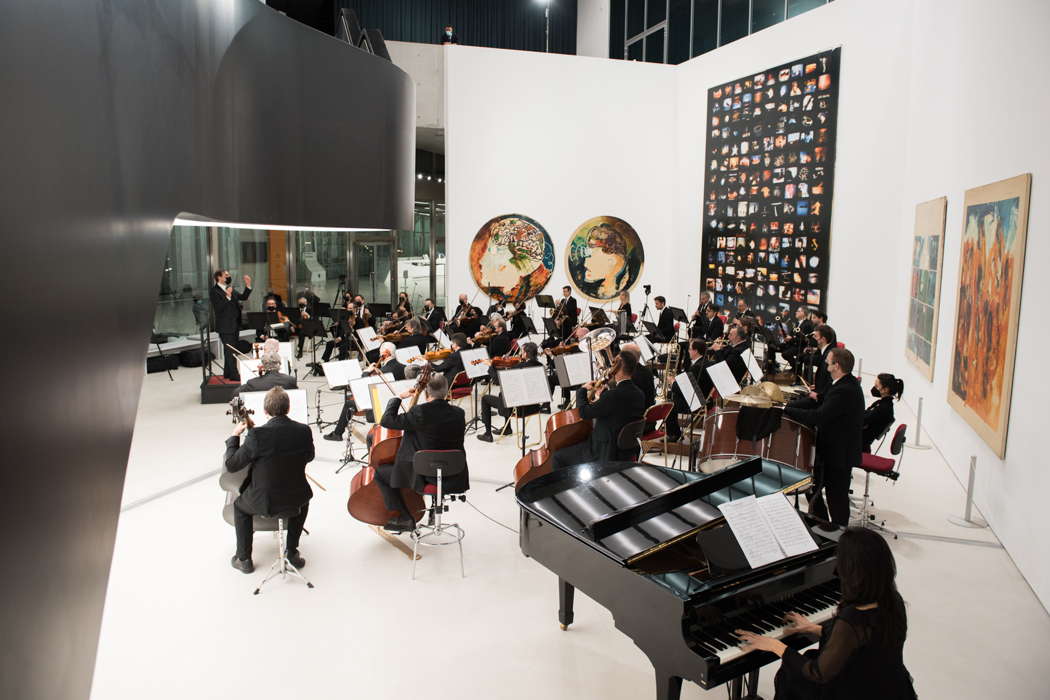
The Teatro dell'Opera di Roma orchestra playing at the Homage to Stravinsky concert. Photo © 2021 Fabrizio Sansoni
The two Suites for Small Orchestra were orchestrated in 1921 and 1925 but date originally from the Swiss period of Stravinsky's life. The source material was from the two little-studied sets of piano duets Stravinsky wrote as 'teaching pieces' for young musicians. Each short movement includes an affectionate dedication to a colleague - composers Alfredo Casella and Erik Satie as well as Ballet Russes impresario Serge Diaghilev - which indicates the composer's desire to also entertain adults with his delightful miniatures. The companion Five Easy Pieces (1917) were designed specifically for the education of Stravinsky's two older children with simple melodies. Beyond the obvious charm, wit and winning 'personalization' of the included dance forms, the suites are a premonition of Stravinsky's approaching neo-classical period. The leanness of the instrumentation, the infectious rhythmic drive and the always perfect instinct for dramatic timing – each a hallmark of the coming years – are all present in the music of the Suites.
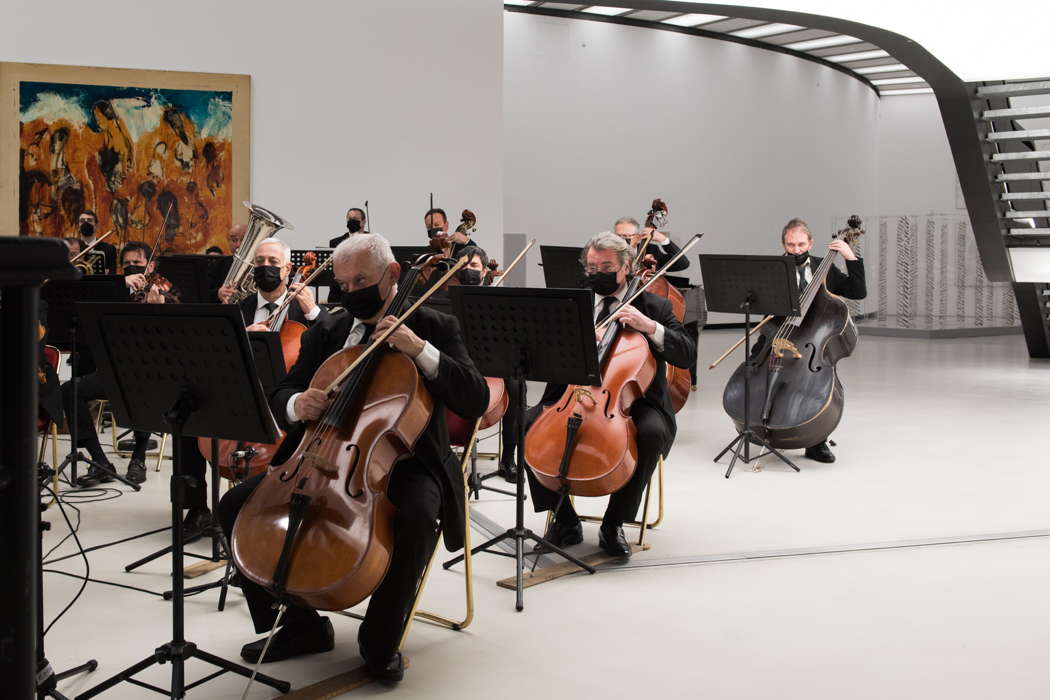
Members of the Teatro dell'Opera di Roma orchestra playing at the Homage to Stravinsky concert. Photo © 2021 Fabrizio Sansoni
Daniele Gatti and the orchestra - especially the cellos - made it vintage Stravinsky ... nothing less.
Copyright © 26 March 2021
Giuseppe Pennisi,
Rome, Italy

CLASSICAL MUSIC ARTICLES ABOUT RUSSIA
TWENTIETH CENTURY CLASSICAL MUSIC ARTICLES


